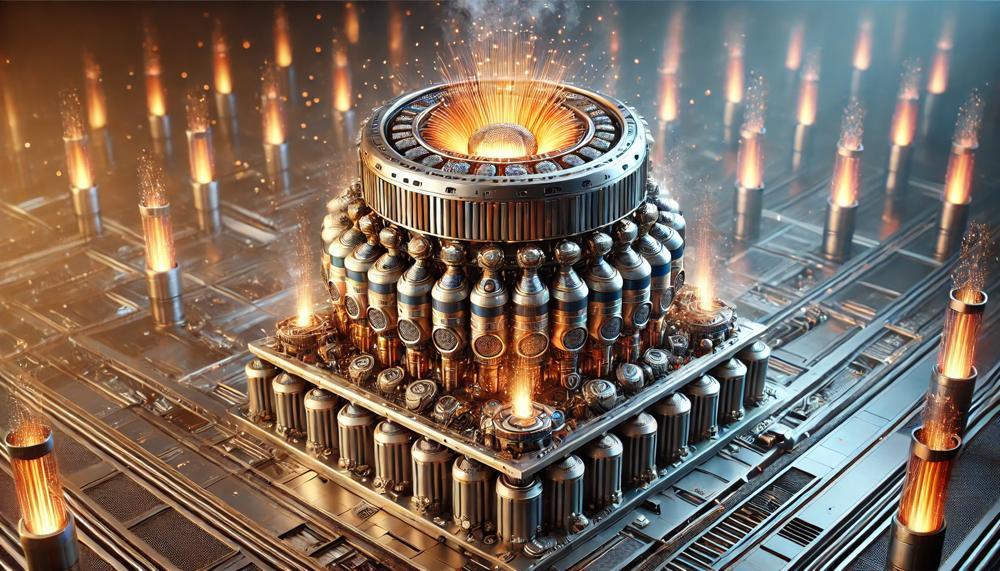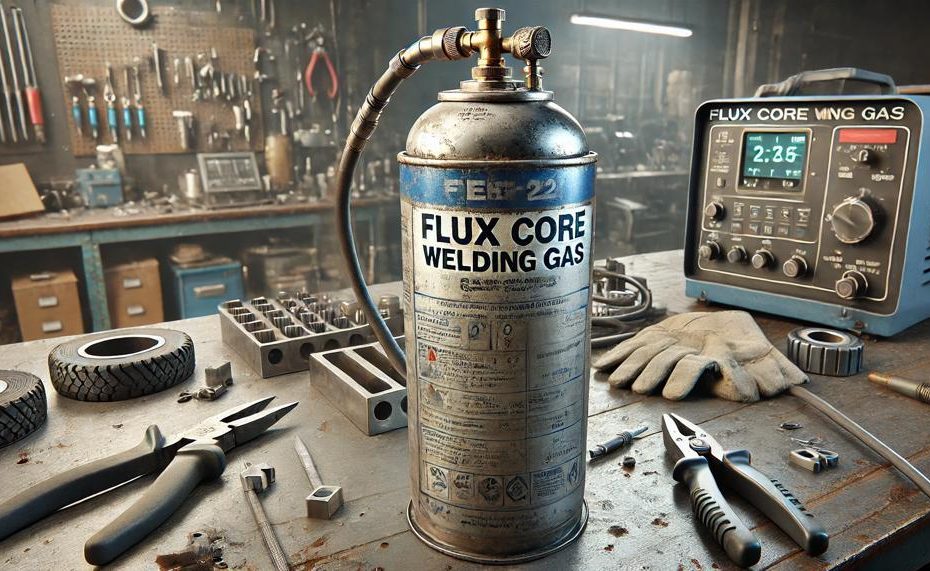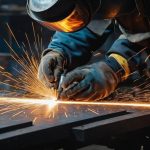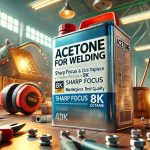If you’ve ever found yourself wondering about the intricacies of this fascinating process, particularly the role of gas, you’re in the right place. Today, we’re diving deep into the heart of flux core welding to uncover the truths, bust the myths, and bring you the answers you’ve been seeking.
Here’s a sneak peek of what we’re about to explore:
- The Essentials of Flux Core Welding: What sets it apart from other welding methods?
- To Gas or Not to Gas: Unraveling the mystery behind the necessity of gas in flux core welding.
- The Pros and Cons: A balanced view on when using gas is advantageous and when it’s not.
- Tips and Tricks: Expert advice for both seasoned welders and novices looking to hone their craft.

Whether you’re a professional welder, a curious hobbyist, or somewhere in between, this discussion is tailored to provide valuable insights into the unique process of flux core welding. So, gear up and let’s embark on this enlightening journey together, where sparks fly and learning ignites.
Contents
What is Flux Core Welding?
Flux core welding, a robust arc welding method, utilises a distinctive wire electrode enshrouded by flux to amalgamate two base materials. This technique shines in heavy industries, celebrated for its swift welding pace, straightforward learning curve, and minimal equipment necessity. It splits into two categories: self-shielded and gas-shielded. The latter ensures superior weld pool protection albeit at a higher expense.
Compatible with both AC and DC power sources, flux core welding excels outdoors and boasts versatility across various metals like aluminum, stainless steel, and mild steel. Its ease of mastery contrasts with traditional welding methods, potentially yielding slightly less sturdy joints. The continuous wire feed accommodates thicker materials and challenging environments where maintaining shielding gas proves tricky.
While feasible on rusted materials, the interaction between flux and rust might undermine the weld quality. In essence, flux core welding offers portability and flexibility for those seeking a user-friendly welding process.
Differences from Other Types of Welding
To illustrate the distinctions between flux core welding and its counterparts, the table below provides a clear comparison:
| Aspect | Flux Core Welding | Other Welding Types |
| Shielding Gas | Optional, with self-shielded types generating their own gas | Typically required, such as in MIG and TIG welding |
| Learning Curve | Comparatively easy | Varies, often more complex and technique-sensitive |
| Equipment Requirement | Less, more portable setups | More extensive, with additional shielding gas apparatus |
| Application Environment | Outdoors and versatile environments | Mostly indoor or controlled environments |
| Welding Speed | Faster | Generally slower, depending on the technique |
| Material Thickness | Suitable for thicker materials | Depends on the method; some are limited to thinner materials |
Flux core welding’s capability to operate sans external shielding gas, especially in breezy or outdoor settings, marks a significant advantage over other welding techniques.
Do You Need Gas for Flux Core Welding?
The essence of flux core welding lies in its versatility and adaptability, especially in challenging conditions. While gas isn’t a must-have for this process, incorporating it does wonders for weld quality. Here’s why gas plays a role and whether it’s indispensable.
The Role of Gas in Flux Core Welding:
Flux core welding, by design, doesn’t require gas to shield the weld because the flux within the wire creates its own protective atmosphere as it burns. However, gas can be added to this process for specific benefits:
- Enhanced Weld Quality: Gas shielding further isolates the weld pool from atmospheric contaminants like oxygen and nitrogen, leading to stronger and cleaner welds.
- Reduced Spatter: The addition of gas minimizes spatter, making for a tidier welding process and less cleanup afterward.
- Corrosion Resistance: Using gas can improve the weld’s resistance to rust and corrosion over time.
Is Gas Necessary?
| Self-Shielded Flux Core | Doesn’t require gas; ideal for outdoor use or in windy conditions. |
| Gas-Shielded Flux Core | Uses gas for better weld pool protection, suited for cleaner, higher-quality welds. |
| Application | Choice between self-shielded or gas-shielded depends on the specific requirements of the job, materials, and desired finish. |
In sum, while gas isn’t essential for flux core welding, its use is a strategic decision to uplift the weld quality under certain conditions. The choice hinges on the specifics of the welding task, the environment, and the quality aspirations of the welder.
Advantages of Self-Shielded Flux Core Welding
| Advantage | Detail | Impact |
|---|---|---|
| Portability and Versatility | No need for external shielding gas, ideal for outdoor and remote locations. | Enables welding in diverse environments and conditions, especially useful in construction, pipeline, and shipbuilding. |
| High-Speed Welding | Continuous electrode feed and self-generated gas shield accelerate the welding process. | Increases productivity by enabling faster project completion. |
| Superior Penetration | Deeper weld pool due to the flux in the electrode. | Results in stronger, more durable welds, suited for heavy-duty applications. |
| Cost-Effectiveness | No need for expensive gas cylinders and regulators. | Reduces overall welding costs, economical for a variety of projects. |
| Cleaner Welds | Less spatter due to controlled arc by the flux in the electrode. | Minimizes post-weld cleanup, enhancing efficiency and finish quality. |
| Simplified Equipment | One machine needed, unlike multiple machines for different welding processes. | Reduces equipment costs and saves space, beneficial for small-scale operations. |
| User-Friendly | Less skill required, accessible to beginners and DIY enthusiasts. | Makes welding more approachable and less intimidating for newcomers. |
In essence, self-shielded flux core welding stands out with its blend of flexibility, efficiency, and user-friendliness. It’s particularly savvy for those tackling diverse outdoor projects or working under budget constraints.
Disadvantages of Self-Shielded Flux Core Welding
While self-shielded flux core welding boasts a handful of benefits, it’s not without its setbacks. Delving into its less appealing facets can help aspiring welders gauge whether it’s the right method for their projects. Below is a breakdown of the key disadvantages:
| Expense of Electrodes: | Costlier than those used in other welding methods, affecting overall project costs. |
| Slag Formation: | Requires removal after each pass, adding time and effort to the welding process. |
| Fumes and Smoke: | Produces a greater volume than other methods, necessitating good ventilation and impacting welder comfort. |
| Operator Skill: | Demands more training, making it less accessible for novices compared to other techniques. |
| Consistency: | Achieving uniform weld quality can be challenging, impacting the final product. |
| Spatter: | Generates significant amounts, leading to potential damage and additional cleanup. |
| Amperage: | Requires higher levels than other processes, impacting energy consumption and equipment requirements. |
| Visibility: | Increased smoke and spatter can reduce welder’s visibility, complicating the task. |
Self-shielded flux core welding, while valuable for certain scenarios, carries its share of challenges. These range from the practicality of cleanup to the nuances of operation and expense.
Advantages of Dual-Shielded Flux Core Welding
Dual-shielded flux core welding stands out among welding techniques for its unique benefits, particularly in terms of efficiency, quality, and versatility. Here’s a deeper dive into its main advantages:
| Enhanced Arc Stability | Provides a smoother welding experience with less spatter and better control, leading to neater, more consistent welds. |
| Higher Deposition Rates | Allows for faster welding speeds and increased productivity, making it a time-efficient option for large-scale projects. |
| Minimal Pre-cleaning Required | The need for metal surface preparation is significantly reduced, saving time and effort before welding commences. |
| Reduced Porosity Risk | Lowers the chances of porosity in welds, ensuring stronger and more reliable joins. |
| Versatility | Effectively welds a wide range of metals and thicknesses, making it a versatile tool for various applications. |
| Improved Weld Quality | The combination of flux core and an external shielding gas leads to cleaner welds with less environmental contamination. |
These advantages make dual-shielded flux core welding a robust choice for industries where welding performance and quality are paramount.
Disadvantages of Dual-Shielded Flux Core Welding
Dual-shielded flux core welding, while celebrated for its superior weld quality and versatility, is not without its challenges. This method’s reliance on both a flux-filled wire and an external shielding gas brings a few hurdles that need careful consideration.
| Challenge | Description | Impact |
| Equipment Costs | Requires the purchase or rental of gas cylinders and regulators. | Increases initial and operational expenses. |
| Complexity | Managing both flux core wire and external gas demands more skill. | Steepens the learning curve for new welders. |
| Portability | The necessity for gas cylinders makes it less mobile. | Limits the method’s feasibility in remote or outdoor locations. |
| Safety | Handling and storing pressurised gas cylinders pose risks. | Requires stringent safety measures and protocols. |
| Environmental Sensitivity | Despite the dual protection, outdoor welding can be challenging due to wind. | Can compromise the gas shield, affecting weld quality. |
| Cleanup | Though reduced, slag and spatter still require removal. | Increases post-welding clean-up time. |
Given these considerations, dual-shielded flux core welding might not suit every project or environment. The method shines in controlled settings where its benefits — such as enhanced weld quality and efficiency — can be fully leveraged. However, for those working in varied or unpredictable environments, or where budget constraints are tight, the added complexity and cost may render it a less favourable choice.
Conclusion
Modern manufacturing is based on the art of flux core welding, which is a dance between metal and flame. It combines the raw power of creation with a lot of different uses. This method, which is unique because it uses a flux-encased wire, doesn’t need an outside gas like most others do, making it more efficient and flexible. No matter if you’re holding your torch in the quiet of a workshop or in the wind, flux core welding can change and do well where others fail.
When you go flux core welding, you’ll find two paths: the gas-free method is self-sufficient and works well in rough outdoor environments, and the gas-shielded method is for people who want the best weld quality and rust protection. Each carries its own torch, showing the way to control over metal with its own unique benefits.
When you work with self-shielded flux core welding, you’re free from gas tanks and can go anywhere, even if it’s wild or far away. It sings a song of speed, toughness, and the guts to face the weather. It is a true partner in building the future. To the contrary, the dual-shielded method, with its gas cover, makes gaps that are stronger and cleaner. This is proof of the desire for perfection, though it does take some skill and tools.
At the point where new ideas and old ways of doing things meet, flux core welding appears not only as a method but also as a way of thinking about how to change and be strong. It calls out to people who are brave enough to change the world and offers a place to work on their goals, whether they are outside or in a workshop.





